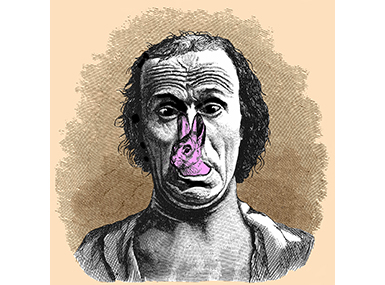This winter, the Addison Gallery of American Art, located on the campus of Phillips Academy in Andover, Massachusetts, will present Throwing Up Bunnies: The Irreverent Interlopings of Triple Candie, 2001–2016. Created and run by art historians Shelly Bancroft and Peter Nesbett (Phillips Academy Class of 1984), the curatorial agency Triple Candie generates exhibitions that challenge fundamental assumptions about the value of art and the nature of the art experience. The first American survey of Triple Candie’s work, Throwing Up Bunnies presents new projects and a selection of past installations, slightly altered for this viewing, including David Hammons: The Unauthorized Retrospective, Undoing the Ongoing Bastardization of The Migration of the Negro By Jacob Lawrence, and The Workshop of the Harrogate Seven. The exhibition will be on view from January 21 through April 2, 2017.
After operating as a traditional non-profit art gallery in Harlem for four years, Triple Candie sought a way to productively oppose what it saw as a growing materialism in the art world and stopped working with artists and showing original art objects. Instead, it began creating exhibitions using what it calls art surrogates—reproductions, unfaithful copies, or props—temporarily put in the service of an idea and then recycled or reused for future projects. In 2010, having realized more than 70 exhibitions, Triple Candie closed its Harlem gallery, left New York, and began producing exhibitions for museums internationally.
In addition to exhibiting art surrogates, Triple Candie has also promoted the work of fictional artists, displayed broken bottles and rocks as historical artifacts, and hired an actor to protest one of its exhibitions. Vilified by some, revered by others, and always generating lively discussion, Triple Candie was called “Manhattan’s one truly alternative alternative space” by the New York Times and “one of the most mysterious and contemporary art institutions on the contemporary scene” by the Milan-based publication Domus.
“Within the history of alternative spaces and organizations, Triple Candie holds a distinct place. It emerged at a time when mainstream institutions started embracing previously excluded art forms and populations, which in turn made it difficult for the smaller venues that championed such work to remain both urgent and relevant,” states Addison Gallery Curator Allison Kemmerer. “Rather than find new marginalized communities for which to advocate, Triple Candie decided to start working without artists, offering up a new model that ironically had, and continues to have, more in common with artist-run organizations that similarly challenge traditional notions about art.”
Triple Candie also served as Edward E. Elson Artists-in-Residence this past fall, collaborating with Phillips Academy art, biology, and physics students to create an on-campus installation. Recruited by the artists to participate as “research fellows” for the Institute for the Study of Universal Uncertainties, the students examined “uncertainty” as a concept common to both the fine arts and sciences. In hands-on workshops, the fellows then translated their observations and ideas about uncertainty into found, altered, and handmade objects that were then incorporated into museological displays inspired by historic wunderkammers or cabinets of curiosity. Limiting explanatory text in favor of compelling yet puzzling selections and juxtapositions these displays—housed in vitrines designed by the artists—are meant to fascinate and engage viewers while encouraging them to both ponder and embrace unknowingness. Located outside Paresky Commons and just a short walk from the Addison Gallery, the Institute for the Study of Universal Uncertainties will be on view through winter season.

